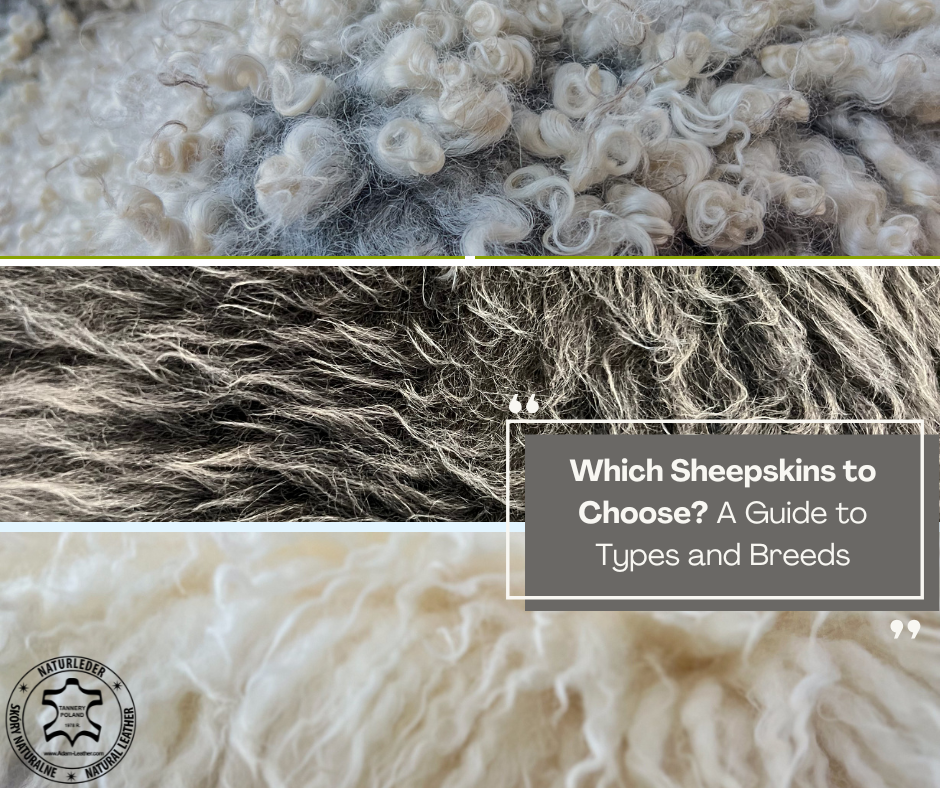Which Sheepskins to Choose? A Guide to Types and Breeds
Sheepskins are an incredibly versatile product used in various industries, from interior decoration to clothing and accessories. Choosing the right type of sheepskin can be challenging, especially if you are unfamiliar with their properties. In this article, we provide a guide to the most popular types and breeds of sheepskins available in our assortment to help you make the best decision.
Types of Sheepskins
Long-haired Sheepskins
Long-haired sheepskins are distinguished by their natural, fluffy fleece, which gives them a soft and unique appearance. They are popular as decorative elements, such as rugs, throws for chairs, or blankets. Some of the most commonly chosen long-haired sheepskins include:
- Icelandic Sheepskins – characterized by long, natural fleece reaching up to 15 cm. They are extremely soft and impressive, and their raw look perfectly matches Scandinavian-style interiors.
- Gotland Sheepskins – originating from the Swedish Gotland sheep breed, they have a unique silvery-gray color and resilient, slightly curled fleece. This is a luxurious choice for those who appreciate a distinctive look and high quality.
Short-haired Sheepskins
Short-haired sheepskins are more practical and easier to maintain. Their soft, trimmed fleece makes them ideal for everyday use. The most popular varieties include:
- Relugan Sheepskins – processed using a special tanning method that gives them a yellowish hue. They are often used in medicine as rehabilitation mattresses and covers for people with skin problems.
- Melarade Sheepskins – exceptionally soft, with a unique appearance created by natural shades and patterns in the fleece. They are an excellent choice for those seeking something original.
Naturally Tanned and Dyed Sheepskins
Sheepskins can be found in their natural form or dyed. Natural sheepskins retain their original color and texture, while dyed sheepskins allow for customization to individual interior design preferences.
Uses of Different Sheepskin Types
- For Interiors – decorative sheepskins are perfect as rugs, throws for sofas, armchairs, or beds.
- For Clothing and Footwear – soft sheepskins are used to make jackets, gloves, and shoes, providing warmth even in the coldest weather.
- For Equestrians – Relugan sheepskins are used in the production of saddle pads and covers, increasing riding comfort.
- For Children – natural sheepskins are often used as safe and hypoallergenic liners for baby strollers or cribs.
How to Choose the Best Sheepskin?
When selecting a sheepskin, consider the following key factors:
- Intended Use – decorative sheepskins can be fluffier, whereas utility skins should be easy to maintain.
- Tanning Process – natural tanning is more eco-friendly, but some sheepskins may require additional processing to be more resistant to moisture and dirt.
- Fleece Quality – dense, soft, and well-groomed fleece is a sign of high-quality sheepskin.
Choosing the right sheepskin depends on its intended use and personal preferences. Long-haired sheepskins, such as Icelandic or Gotland, make elegant decorations, while short-haired Melarade and Relugan sheepskins are more practical. Regardless of your choice, natural sheepskins guarantee comfort, durability, and a stylish look.












